class: center, middle, inverse, title-slide .title[ # Assortativity ] .author[ ### David Garcia <br><br> <em>ETH Zurich</em> ] .date[ ### Social Data Science ] --- layout: true <div class="my-footer"><span>David Garcia - Social Data Science - ETH Zurich </span></div> --- # Assortativity .center[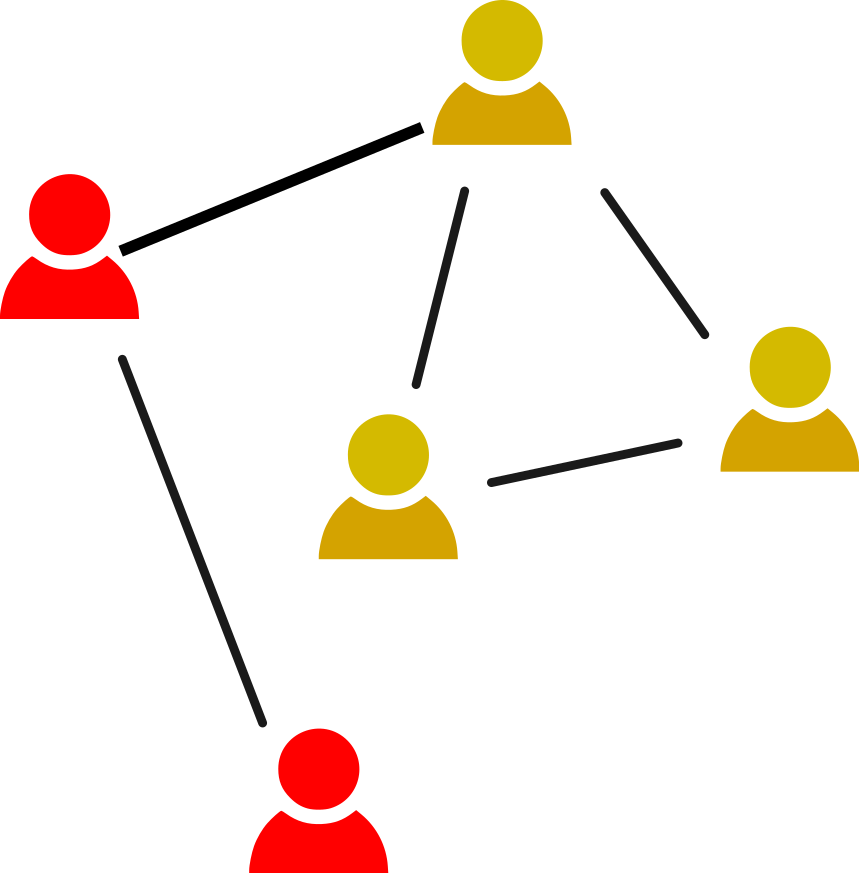 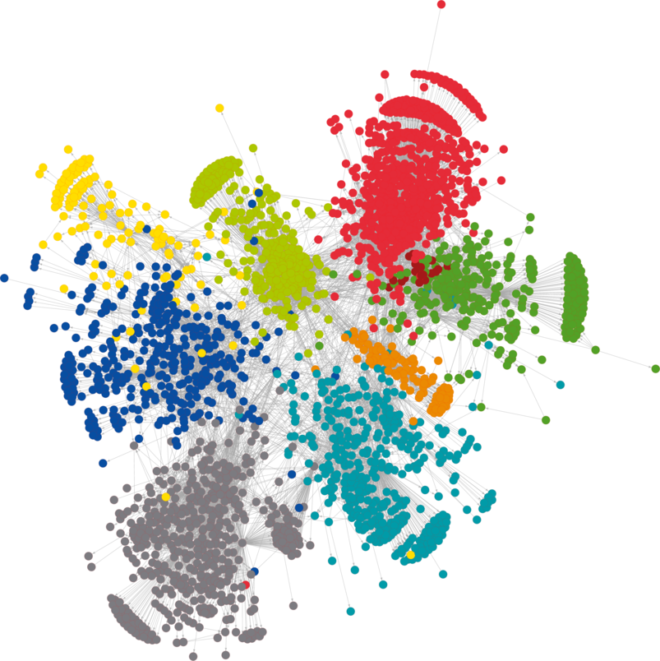] > **Assortativity:** A network property by which similar nodes are more likely to be connected than dissimilar nodes --- # Measuring Assortativity Similarity is based on some node property, e.g. degree, age, political orientation, gender... Can be measured with the **assortativity coefficient**: `\begin{equation*} r=\frac{\sum_c e_{cc}-\sum_c a_c b_c}{1-\sum_c a_c b_c} \end{equation*}` - `\(c\)` are the classes of nodes - `\(e_{cd}\)` is the* **fraction of all edges** connecting nodes of class `\(c\)` with nodes of class `\(d\)` - `\(e_{cc}\)` is the fraction of all edges connecting two nodes of class `\(c\)` - `\(a_c=\sum_d e_{cd}\)`, and `\(b_c=\sum_d e_{dc}\)` (endpoint class fractions) --- ## Three mechanisms that generate assortativity 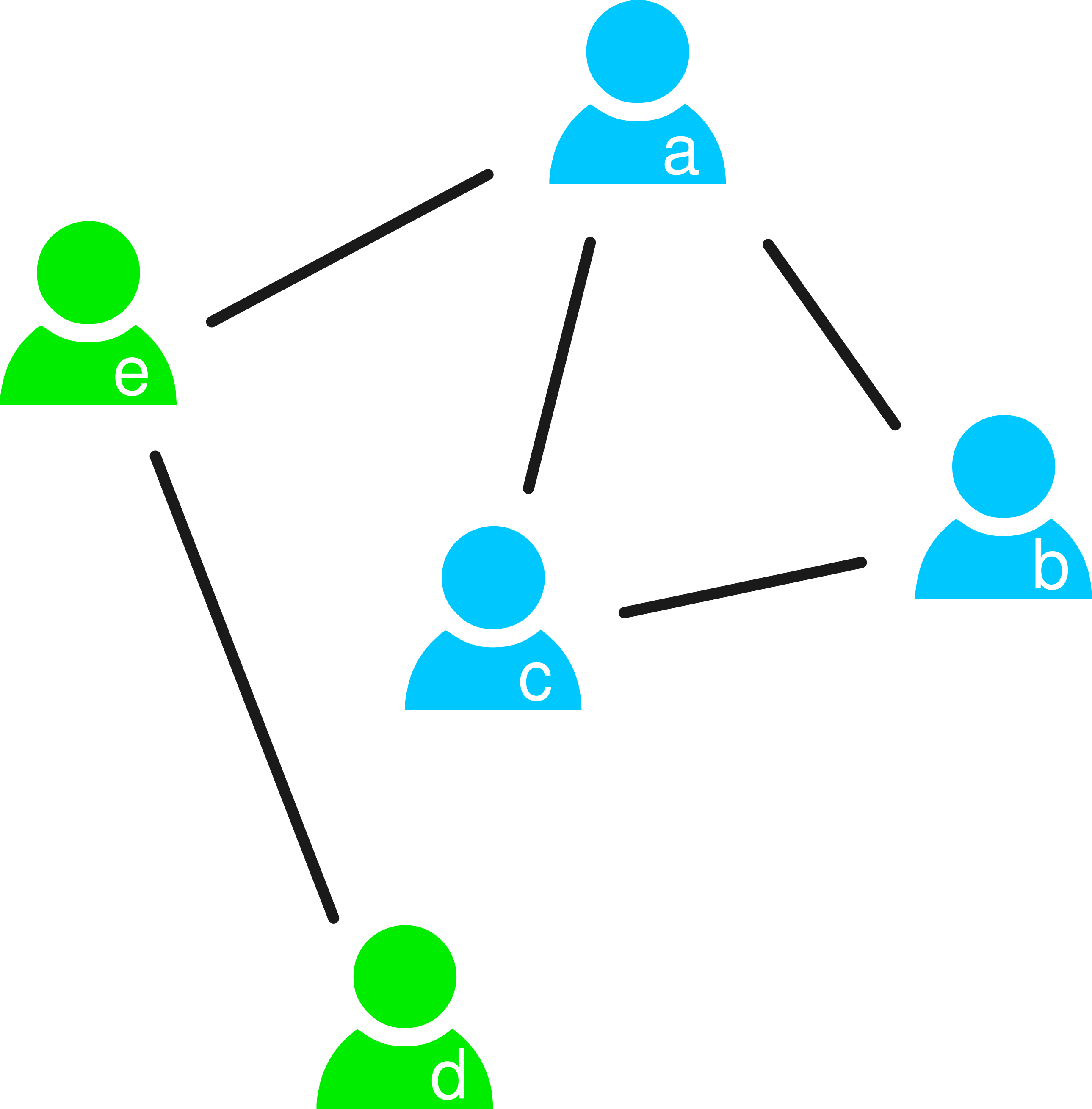  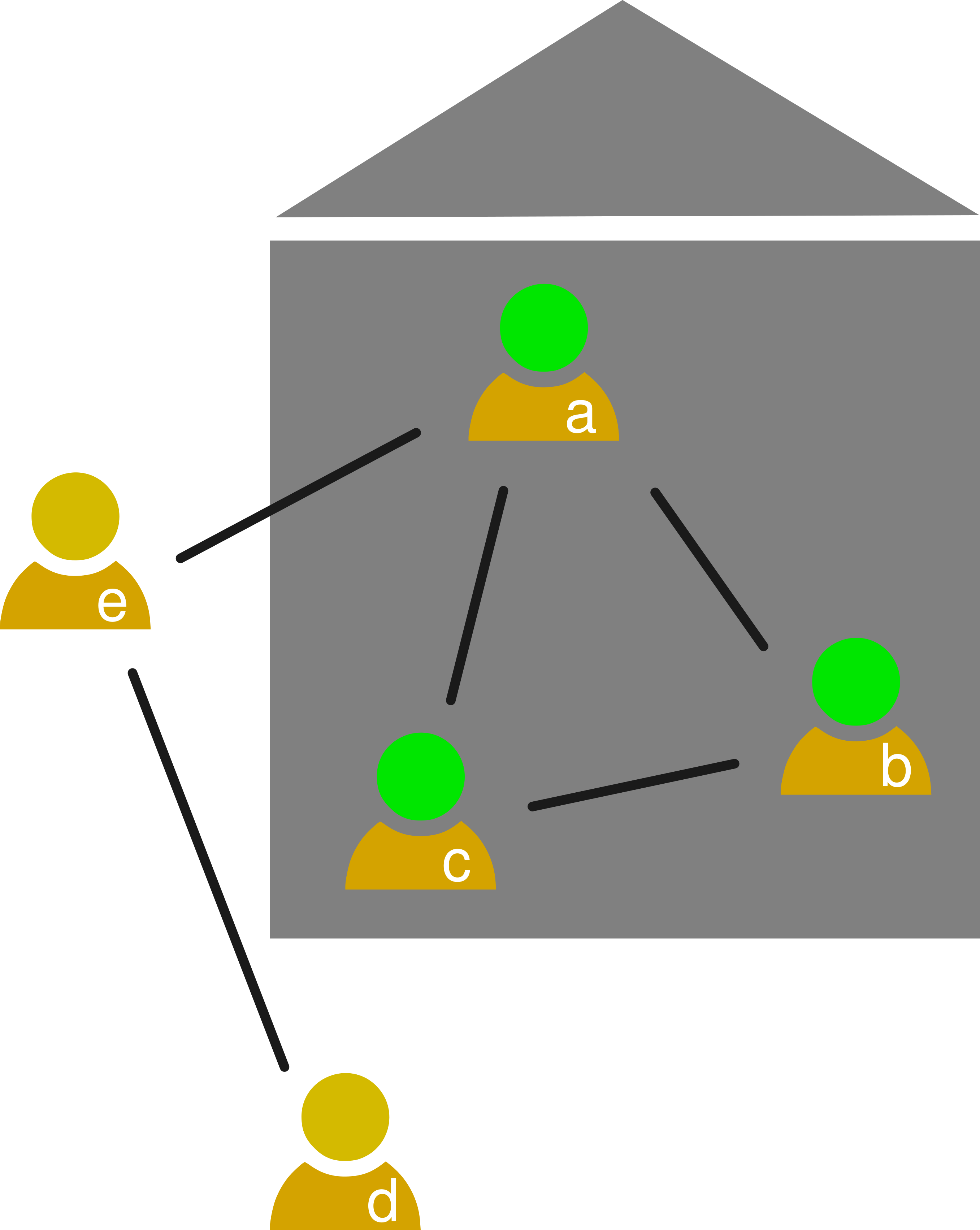 .center[**Homophily, social contagion, and confounding**] --- ## Homophily    > **Homophily:** Phenomenon in which people are more likely to create social links to similar than to dissimilar people --- ## Social Contagion    > **Social contagion:** Phenomenon in which people tend to adopt behaviors of their social contacts --- ## Confounding    > **Confounding:** External effects can produce both link creation and node attributes (independent of the network topology) --- # Assortativity of happiness .center[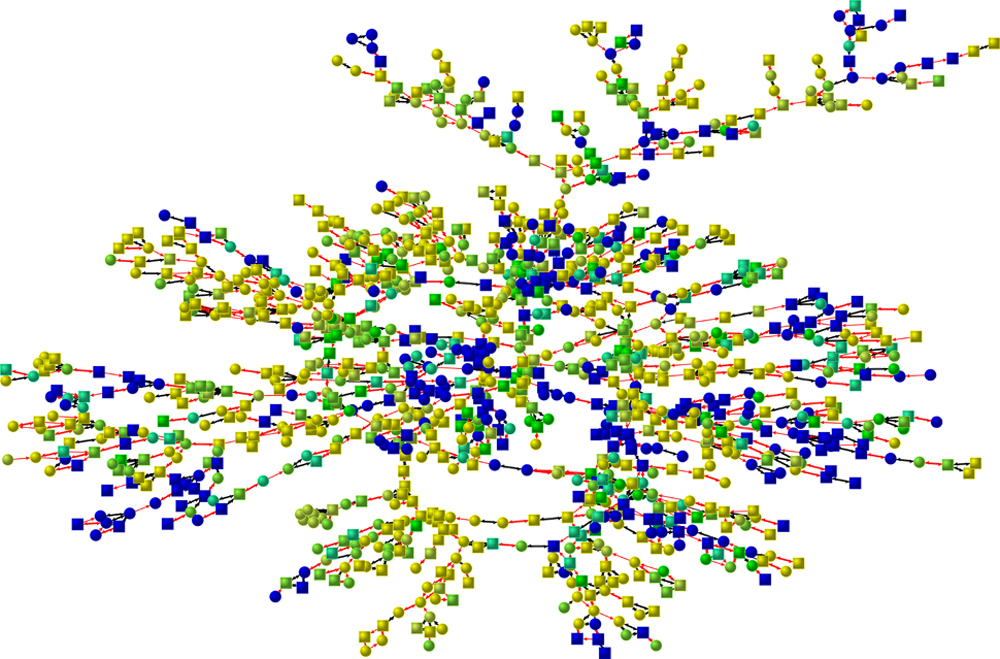]